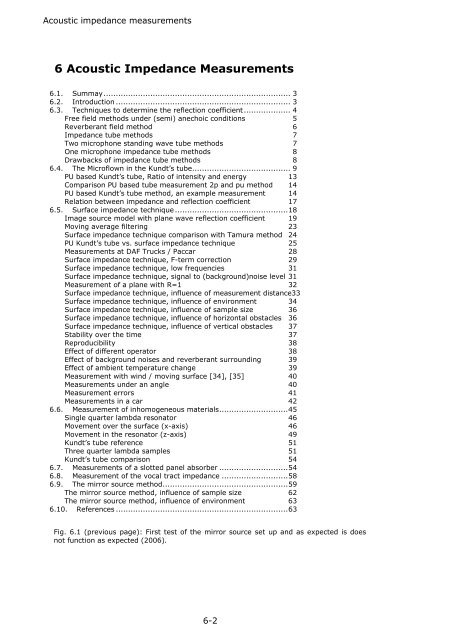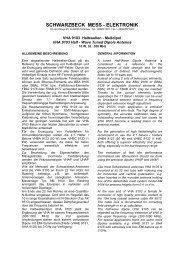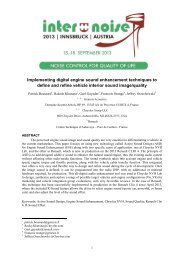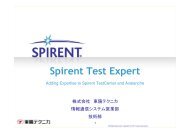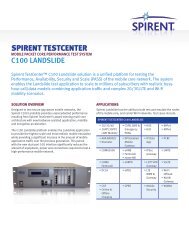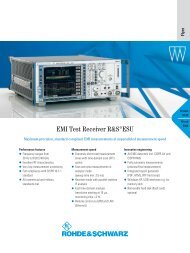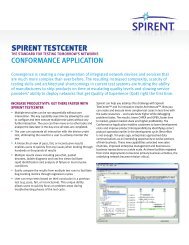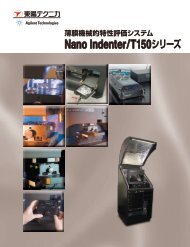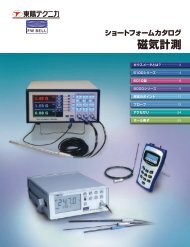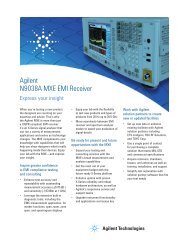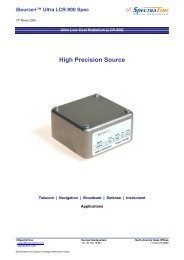Chapter 6: Impedance measurements
Chapter 6: Impedance measurements
Chapter 6: Impedance measurements
You also want an ePaper? Increase the reach of your titles
YUMPU automatically turns print PDFs into web optimized ePapers that Google loves.
Acoustic impedance <strong>measurements</strong><br />
6 Acoustic <strong>Impedance</strong> Measurements<br />
6.1. Summay............................................................................ 3<br />
6.2. Introduction ....................................................................... 3<br />
6.3. Techniques to determine the reflection coefficient ................... 4<br />
Free field methods under (semi) anechoic conditions 5<br />
Reverberant field method 6<br />
<strong>Impedance</strong> tube methods 7<br />
Two microphone standing wave tube methods 7<br />
One microphone impedance tube methods 8<br />
Drawbacks of impedance tube methods 8<br />
6.4. The Microflown in the Kundt’s tube........................................ 9<br />
PU based Kundt’s tube, Ratio of intensity and energy 13<br />
Comparison PU based tube measurement 2p and pu method 14<br />
PU based Kundt’s tube method, an example measurement 14<br />
Relation between impedance and reflection coefficient 17<br />
6.5. Surface impedance technique ..............................................18<br />
Image source model with plane wave reflection coefficient 19<br />
Moving average filtering 23<br />
Surface impedance technique comparison with Tamura method 24<br />
PU Kundt’s tube vs. surface impedance technique 25<br />
Measurements at DAF Trucks / Paccar 28<br />
Surface impedance technique, F-term correction 29<br />
Surface impedance technique, low frequencies 31<br />
Surface impedance technique, signal to (background)noise level 31<br />
Measurement of a plane with R=1 32<br />
Surface impedance technique, influence of measurement distance33<br />
Surface impedance technique, influence of environment 34<br />
Surface impedance technique, influence of sample size 36<br />
Surface impedance technique, influence of horizontal obstacles 36<br />
Surface impedance technique, influence of vertical obstacles 37<br />
Stability over the time 37<br />
Reproducibility 38<br />
Effect of different operator 38<br />
Effect of background noises and reverberant surrounding 39<br />
Effect of ambient temperature change 39<br />
Measurement with wind / moving surface [34], [35] 40<br />
Measurements under an angle 40<br />
Measurement errors 41<br />
Measurements in a car 42<br />
6.6. Measurement of inhomogeneous materials............................45<br />
Single quarter lambda resonator 46<br />
Movement over the surface (x-axis) 46<br />
Movement in the resonator (z-axis) 49<br />
Kundt’s tube reference 51<br />
Three quarter lambda samples 51<br />
Kundt’s tube comparison 54<br />
6.7. Measurements of a slotted panel absorber ............................54<br />
6.8. Measurement of the vocal tract impedance ...........................58<br />
6.9. The mirror source method...................................................59<br />
The mirror source method, influence of sample size 62<br />
The mirror source method, influence of environment 63<br />
6.10. References ......................................................................63<br />
Fig. 6.1 (previous page): First test of the mirror source set up and as expected is does<br />
not function as expected (2006).<br />
6-2


